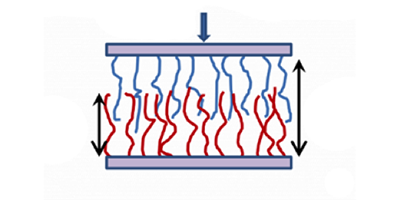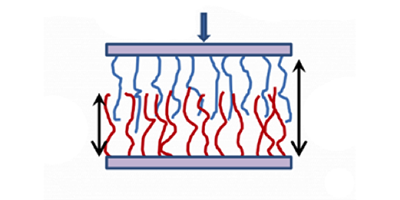Fine Tuning Friction
Without lubrication, most machinery, from wagon wheels to turbocharged car engines, would shudder to a halt. The reason is friction, a highly complex phenomenon that generates heat and damage on surfaces in contact. While conventional friction-reduction methods involve passive control by adequate lubricant choice, Carlos Drummond of the CNRS Centre de Recherche Paul Pascal, France, reports in Physical Review Letters that there are sophisticated ways to actively adjust frictional forces with electric fields.
Drummond started from the knowledge that external electric fields can modify the conformation of electrically charged molecules. By using molecules that spontaneously get adsorbed at surfaces, he deposited coatings of charged polymers called polyelectrolytes on smooth mica planes. These molecules form “polymer brushes” because they attach to the surface and stick out like bristles on a toothbrush. When two of these mica surfaces are put together, the frictional force between them depends on how the polymer brushes interpenetrate. The author applied an electric field by means of electrodes attached to the backsides of the mica and showed that this altered the polymer conformations, resulting in a dramatic change in friction.
Because the electric response is rapid, and electrical signals are straightforward to generate, Drummond envisions that the effect may be useful for many applications, ranging from wear reduction in artificial prostheses to real-time control of tactile sensations. One could imagine human-computer interfaces by which tactile friction conveys information to the vision impaired. – David Voss





